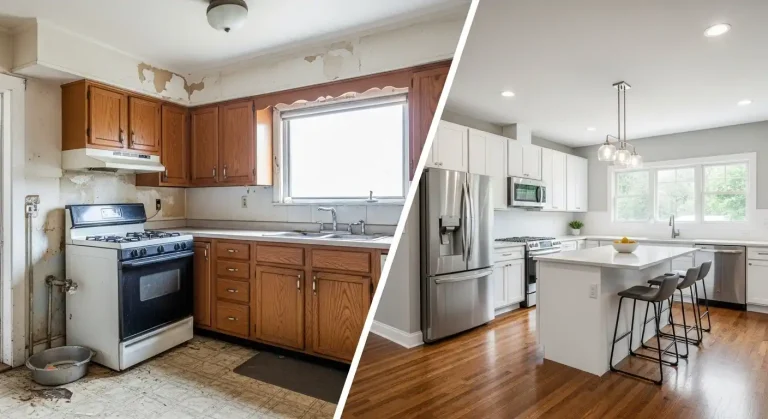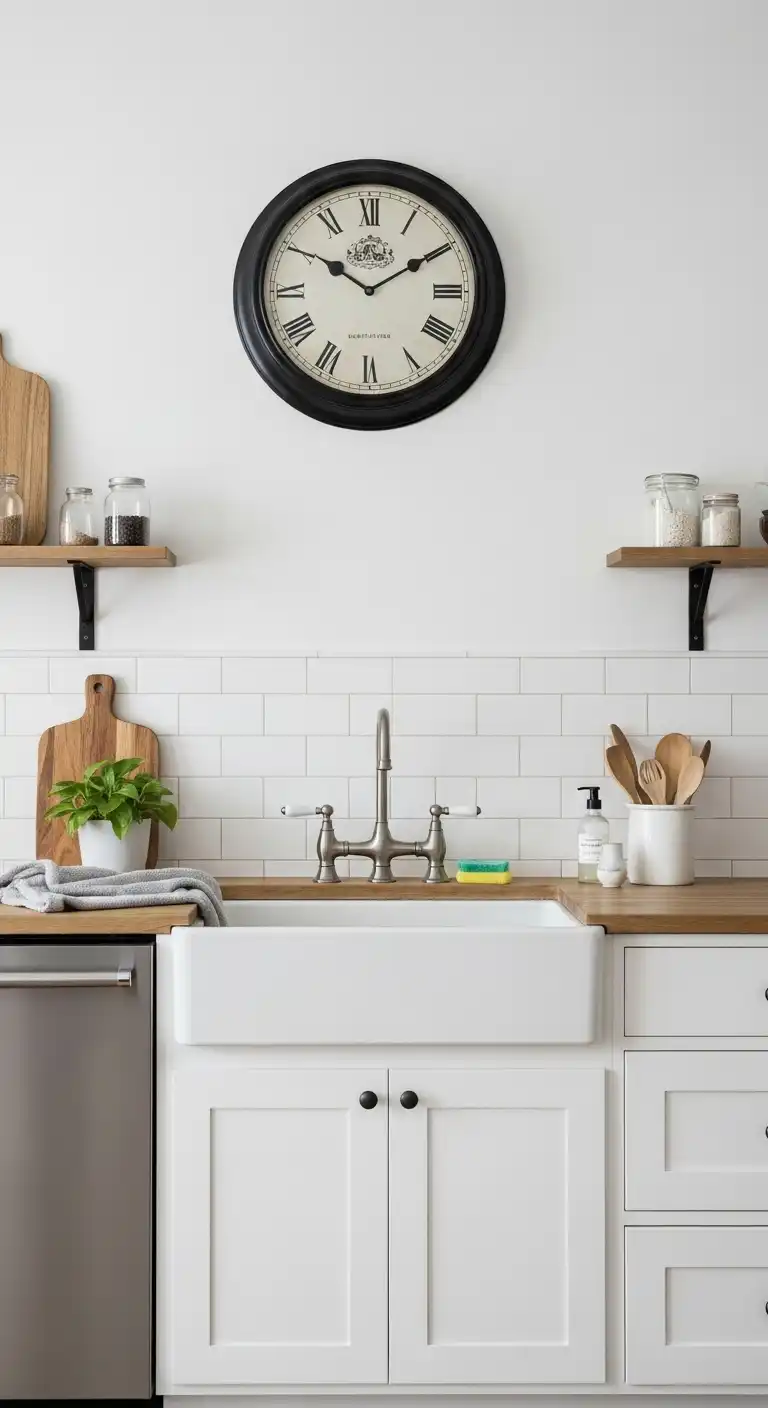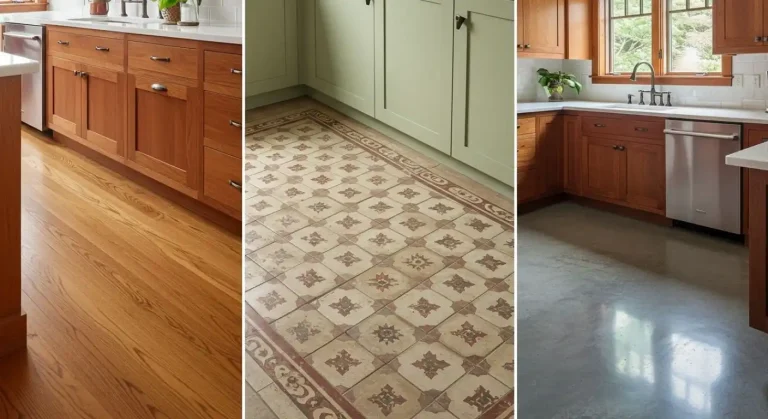Mexican Kitchen Decor: 19 Creative Ideas Full of Charm
Add color and charm to your home with these beautiful Mexican kitchen decor ideas. From bold tiles to rustic details, discover simple ways to bring this vibrant style to life.

Mexican kitchen decor has a way of turning ordinary spaces into vibrant, joyful retreats.
With its bold use of color, handcrafted artistry, and rustic textures, this style celebrates both tradition and creativity.
The result? A kitchen that’s not just a place to cook, but a place to gather, laugh, and enjoy life.
Christmas & Year-End Deals On Amazon !
Don’t miss out on the best discounts and top-rated products available right now!
*As an Amazon Associate, I earn from qualifying purchases.
From Talavera tiles and colorful textiles to earthy terracotta and rustic wood, Mexican-inspired kitchens are rich in charm and personality.
They offer the perfect blend of coziness and vibrancy, making every meal feel like a celebration.
In this article, we’ll share 19 Mexican kitchen decor ideas to spark your imagination and help you bring this captivating style into your own home.
1) Colorful Talavera Tile Backsplash

I like using Talavera tiles for kitchen backsplashes because of their bright colors and detailed patterns.
These hand-painted tiles bring a lively and traditional look to the space.
They work well with plain cabinets and countertops, adding a splash of color without overwhelming the room.
Talavera tiles also reflect Mexican craftsmanship, giving the kitchen a unique and warm feel.
2) Hand-Painted Mexican Ceramic Sinks
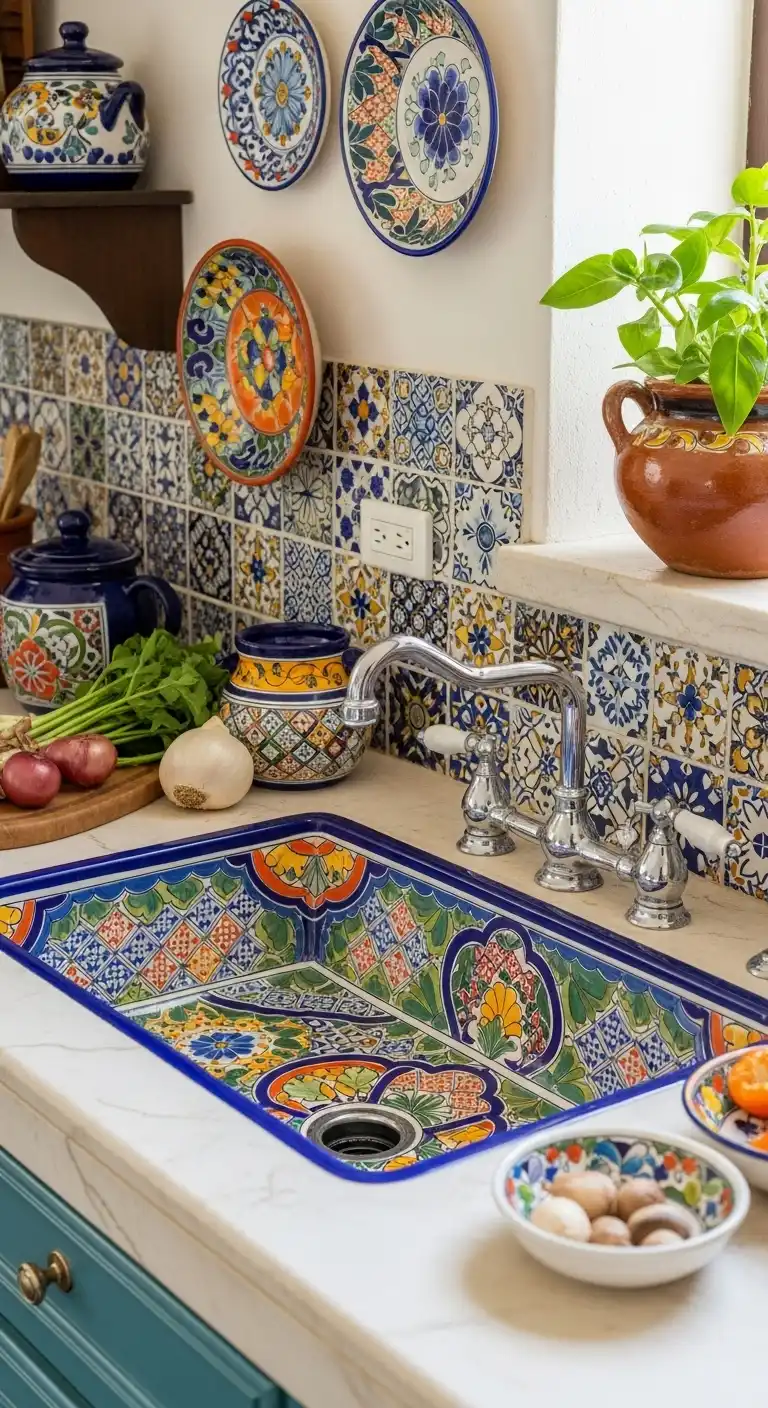
I love how hand-painted Mexican ceramic sinks add color and culture to a kitchen.
These sinks often feature bright patterns and traditional designs, making them both practical and beautiful.
They can fit into many styles, from rustic to modern, bringing a unique touch to any space.
They are easy to clean and durable, and the artwork makes the sink a focal point.
Adding one can instantly lift the look of your kitchen.
3) Bold Red and Turquoise Wall Paint
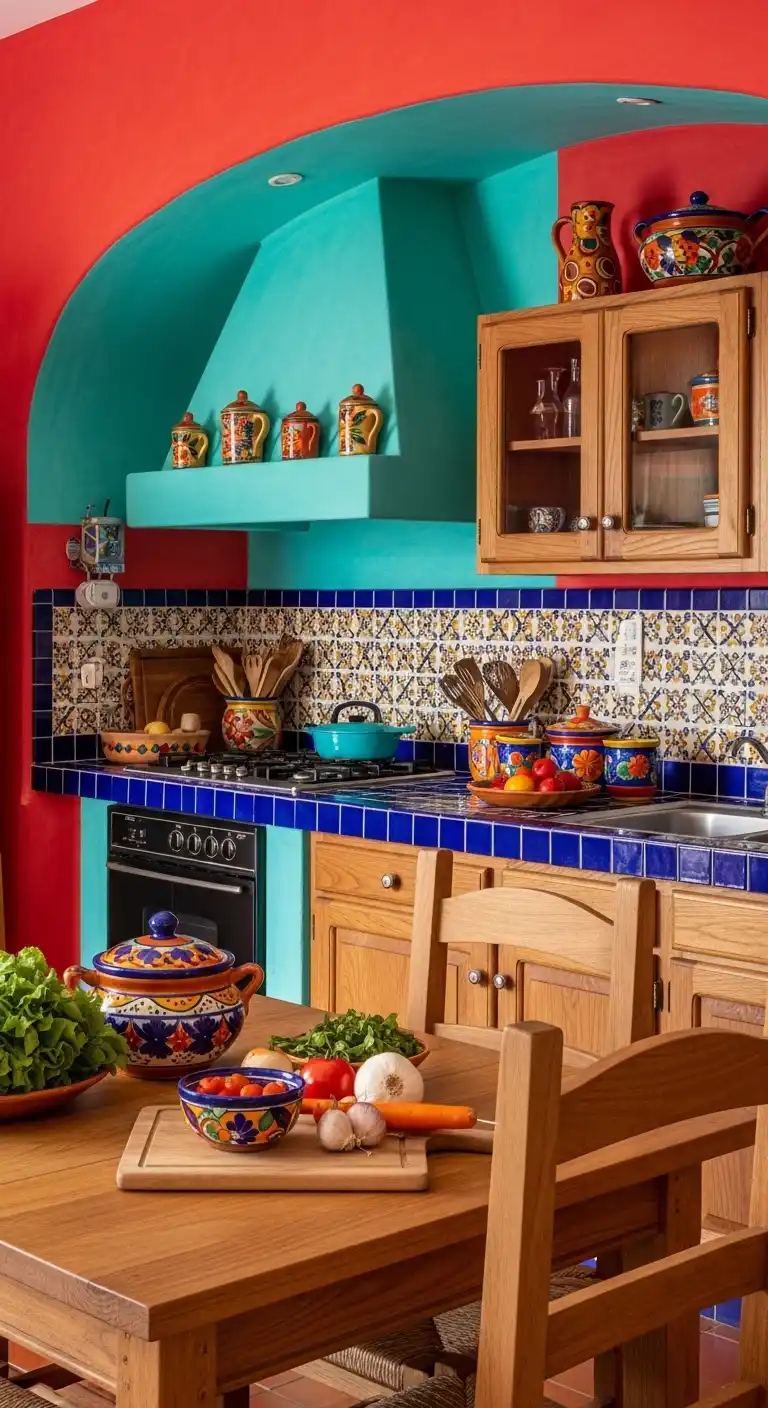
I like using bold red and turquoise for walls in a Mexican kitchen. These colors bring energy and warmth to the space.
Turquoise adds a fresh, modern touch, while red gives a strong, traditional feel. Together, they create a lively backdrop.
Christmas & Year-End Deals On Amazon !
Don’t miss out on the best discounts and top-rated products available right now!
*As an Amazon Associate, I earn from qualifying purchases.
This combination works well with wooden cabinets and colorful tiles. It’s a simple way to add character without too much effort.
4) Rustic Wood Beam Ceiling

I like using rustic wood beams on the ceiling to add warmth to a Mexican kitchen.
These beams often come from reclaimed wood, which brings a natural, authentic feel.
They give the room a cozy look while also adding visual interest.
In my experience, pairing these beams with warm colors or natural materials helps create a balanced, inviting space.
5) Wrought Iron Pendant Lighting

I find wrought iron pendant lights add a strong, rustic touch to a Mexican kitchen.
They bring warmth with their dark metal and often have amber or colorful glass shades.
These lights work well hung over kitchen islands or dining areas.
They help create an inviting atmosphere while matching the traditional, handcrafted look I expect in this style.
6) Mexican Clay Pottery Display

I like to use Mexican clay pottery as a key part of my kitchen decor. These handmade pieces add texture and warmth.
Displaying pottery on open shelves or wooden surfaces helps highlight their colors and shapes.
Grouping items in odd numbers, like three or five, creates a balanced look. It also keeps the display simple and authentic.
Christmas & Year-End Deals On Amazon !
Don’t miss out on the best discounts and top-rated products available right now!
*As an Amazon Associate, I earn from qualifying purchases.
7) Terracotta Floor Tiles

I like using terracotta floor tiles in Mexican kitchen decor because they bring warmth and a natural feel.
These tiles have an earthy color that fits well with rustic and traditional styles.
Terracotta floors work great with simple cabinets and colorful accents.
They create a cozy and inviting space without being too bright or overwhelming.
8) Vibrant Mexican Textiles for Curtains

I like using vibrant Mexican textiles for curtains in the kitchen.
These colorful fabrics bring life and warmth to the space.
Patterns often include stripes and traditional designs that add texture and movement.
I find that sarapes with fringes work especially well to create an authentic look.
Using textiles like these is a simple way to add character and brighten the room without a full remodel.
9) Wooden Open Shelving with Otomi Textile Liner

I like using wooden open shelves in my kitchen because they add warmth and a natural feel.
Adding an Otomi textile liner gives the shelves a bright and colorful touch.
The Otomi patterns bring in Mexican culture with their vibrant, hand-embroidered designs.
Christmas & Year-End Deals On Amazon !
Don’t miss out on the best discounts and top-rated products available right now!
*As an Amazon Associate, I earn from qualifying purchases.
This combination of wood and fabric makes the space feel both practical and unique.
10) Traditional Saltillo Tiles on Countertops

I like using traditional Saltillo tiles on my kitchen countertops because they add a warm, rustic feel.
These handmade tiles bring natural color variations that make each countertop unique.
Saltillo tiles are durable and easy to clean, which suits busy kitchens.
I also appreciate how they blend well with other Mexican decor elements, giving the space an authentic look.
11) Brightly Painted Mexican Tile Counter Bar

I find that a brightly painted Mexican tile counter bar instantly adds color and character to any kitchen.
The hand-painted tiles bring in unique patterns and vibrant shades that make the space lively.
It also serves as a functional area while showing off traditional Mexican art in a practical way.
12) Mexican Kitchen with Bold Nature-Inspired Focal Art

A vibrant Mexican kitchen with rustic wooden cabinets, hand-painted ceramic tiles, potted green plants, and traditional kitchen decor.
On the wall hangs a large framed artwork inspired by Mexican folk art, featuring bold, surreal botanical elements like oversized flowers, cacti, and colorful birds.
The bright, nature-filled artwork serves as the focal point, adding energy and cultural flair without overpowering the warm, earthy tones of the kitchen.
13) Copper Utensil Hanging Rack

I like using a copper utensil hanging rack in a Mexican kitchen. It adds a warm, natural look and keeps tools easy to reach.
Christmas & Year-End Deals On Amazon !
Don’t miss out on the best discounts and top-rated products available right now!
*As an Amazon Associate, I earn from qualifying purchases.
The copper shines against colorful tiles or rustic walls. Hanging utensils also save counter space and help keep the kitchen tidy.
This style fits well with other traditional Mexican decor, giving the kitchen an authentic feel.
14) Handwoven Baskets for Storage

I like using handwoven baskets in my kitchen because they offer practical storage with style.
They help organize fruits, snacks, and small items while adding a natural, colorful touch.
These baskets fit easily on shelves or countertops.
They bring texture and a bit of Mexican tradition to my kitchen without cluttering the space.
15) Decorative Mexican Tin Mirrors
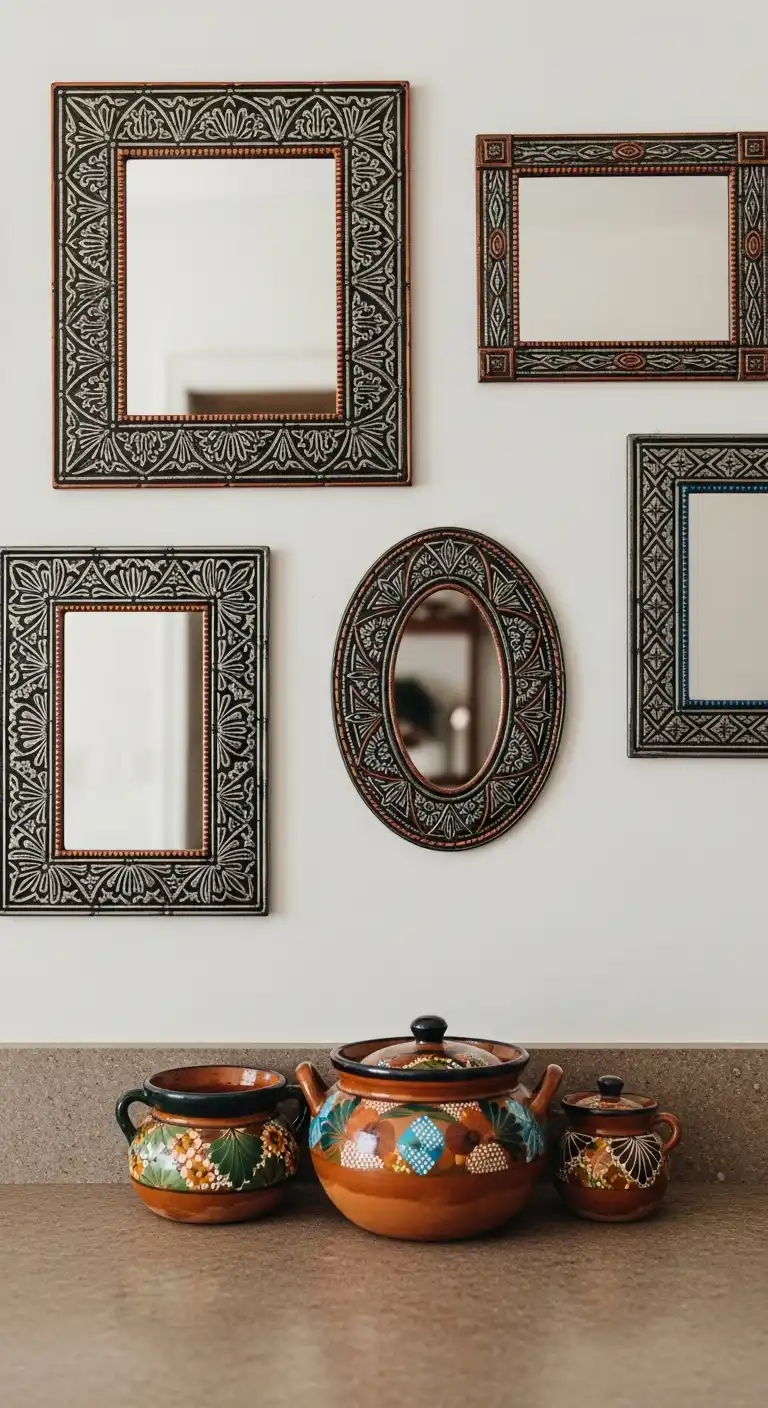
I like using decorative Mexican tin mirrors to add a rustic touch to my kitchen.
These mirrors often have colorful tin frames with detailed patterns.
They come in many shapes and sizes, which makes it easy to find one that fits my space.
The bright accents on the tin bring a subtle pop of color without overwhelming the room.
They are simple yet unique pieces that add character to my kitchen walls.
16) Colorful Mosaic Table Centerpiece

I like using a colorful mosaic as a table centerpiece to bring a warm and artistic feel to the kitchen.
The small, bright tiles create a lively pattern that catches the eye without being too busy.
This type of centerpiece blends well with traditional Mexican decor, adding texture and color naturally.
Christmas & Year-End Deals On Amazon !
Don’t miss out on the best discounts and top-rated products available right now!
*As an Amazon Associate, I earn from qualifying purchases.
It’s a simple way to add charm and personality to the room.
17) Talavera Pottery Dishware Sets

I like using Talavera pottery dishware because each piece is handmade and hand-painted.
The bright colors add a lively touch to any kitchen or dining table.
These sets often include plates, bowls, and serving pieces that are both beautiful and functional.
They are lead-free, making them safe for everyday use.
Color Theory in Mexican Kitchen Decor

Color plays a key role in Mexican kitchen decor. The right hues create energy, warmth, and personality.
Using specific color combos and bright accents can make the space feel lively without being overwhelming.
Popular Color Combinations
I often see vibrant colors paired to reflect Mexican culture. Common combos include:
- Turquoise and orange – This mix brings warmth and freshness.
- Red and yellow – Bold and energetic, these colors make the kitchen inviting.
- Blue and white – This gives a cooler, traditional feel often used with Talavera tile.
- Green and pink – A playful yet balanced option.
These combinations work well on walls, tiles, and cabinets. They balance boldness with harmony and highlight handcrafted details.
I recommend picking two main colors and adding a neutral like white or beige to soften the look.
Incorporating Bright Accents
Small accents bring vibrancy without overcrowding the space. Think of adding:
- Talavera pottery in bright blues, yellows, or reds.
- Colorful textiles like table runners or chair cushions.
- Painted racks, light fixtures, or skillets in bold hues.
- Hand-painted tiles in splashy patterns around the backsplash.
These touches add interest and tie the room together.
Christmas & Year-End Deals On Amazon !
Don’t miss out on the best discounts and top-rated products available right now!
*As an Amazon Associate, I earn from qualifying purchases.
I like to use accents as focal points so the kitchen feels festive but not chaotic.
Bright colors in small doses also allow flexibility if you want to update your style later.
Maintaining Authentic Mexican Style

To keep a kitchen truly Mexican in style, it’s important to focus on materials and respect the culture behind the design.
The right choices in both can bring a genuine feel to the space.
Sourcing Traditional Materials
When choosing materials, I look for authentic, hand-crafted items.
Common materials include terra cotta tiles, rustic wood, and colorful Talavera ceramics. These items add texture and color that feels original.
You can find these products from local Mexican artisans or specialty stores online.
Handmade textiles like serapes and woven fabrics also add warmth and cultural depth.
Avoid mass-produced imitations that lack the traditional craftsmanship.
Using natural, earthy materials not only fits the style but also supports the cultural authenticity of the kitchen.
For example, hand-painted tiles often feature bright colors and patterns unique to specific regions of Mexico.
Understanding Cultural Significance
Each design element in a Mexican kitchen usually has meaning or history behind it.
Christmas & Year-End Deals On Amazon !
Don’t miss out on the best discounts and top-rated products available right now!
*As an Amazon Associate, I earn from qualifying purchases.
I make sure to respect this by learning what the colors and patterns represent.
For instance, blue and yellow tiles often symbolize water and sun, which are important in Mexican culture.
Handwoven textiles often tell stories through their patterns.
When I add these textiles, I choose ones that come from recognized weaving communities.
This respect shows in decor and gives the kitchen a deeper connection to Mexican heritage.
Rustic finishes and handmade pottery reflect traditions passed down over generations, creating a home space filled with meaning, not just color and style.
Understanding the culture helps avoid turning the decor into just a trend without roots.

